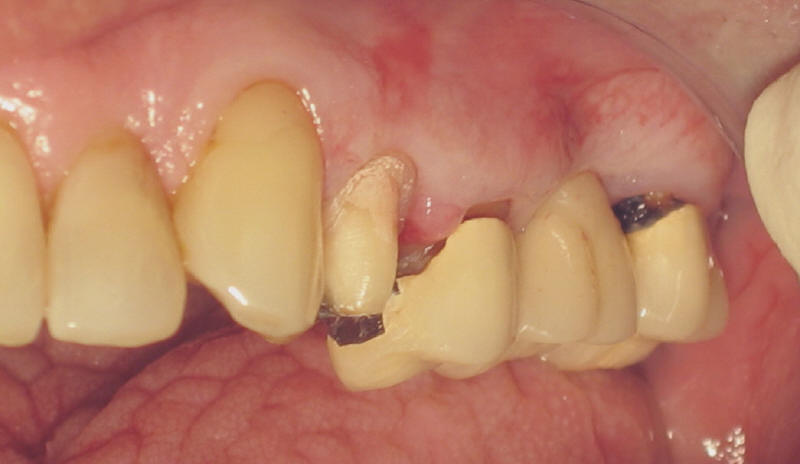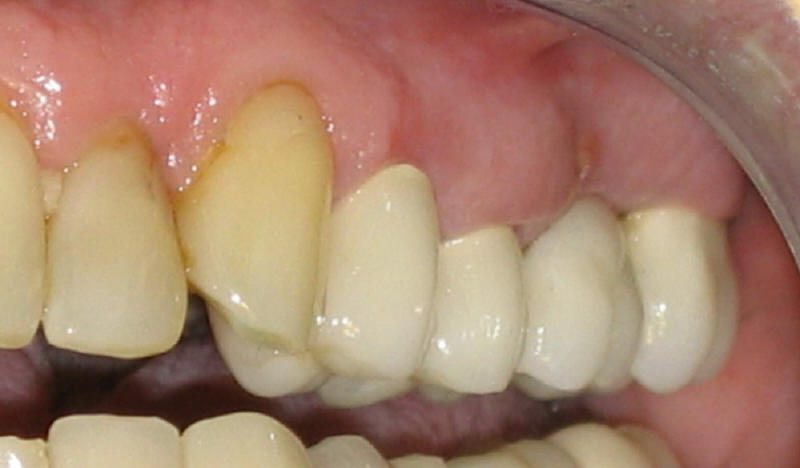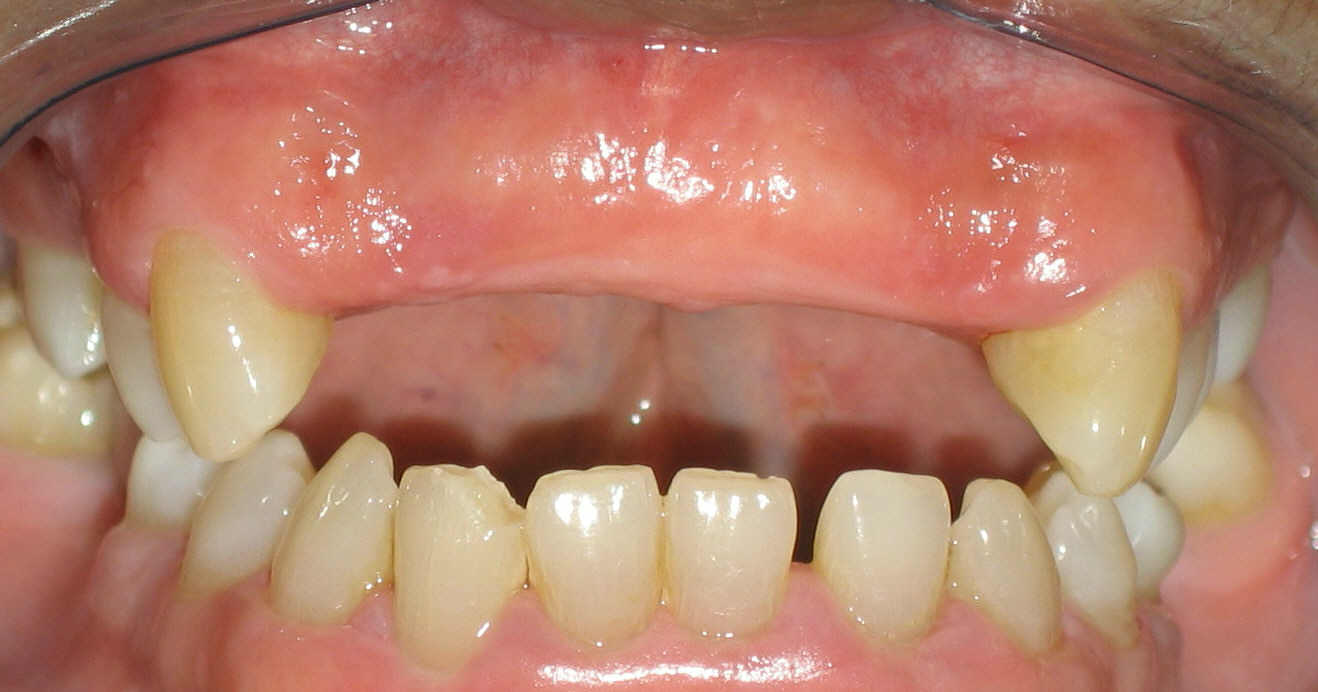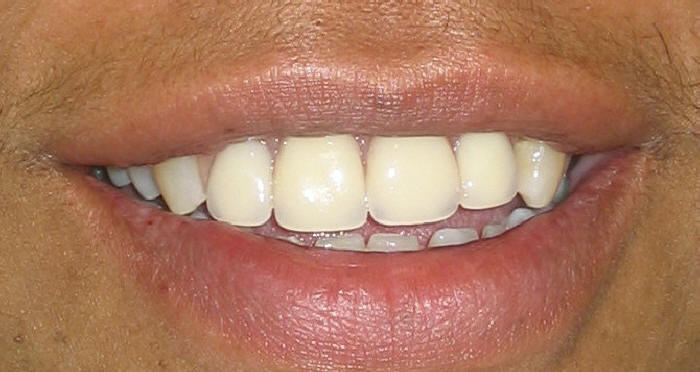



 |
 |
| Fig.1 | Fig.2 |
 |
 |
| Fig.3 | Fig.4 |
Dental Education Lecture: Bridge & Partial Denture
In last lecture, we discuss bridge and implant. Implants are quite unique. They can be used to replace any number of missing teeth: from one to all. Like bridges, implants are designed to simulate our natural teeth. After cementation of bridge or implant, you feel fairly natural. A bridge is usually used to replace a limited number of missing teeth: one or two. We need at least one anchoring teeth in the front and another in the back. The patient in Fig.1 just loses a crown due to new cavity. There is a bridge behind, replacing a missing tooth in the middle. The two anchoring teeth have also cavities (black lines near gums). We redo the crown and bridge (Fig.2) to everyone's satisfaction. The patient chooses lighter shade of the false teeth and plans to have whitening later on. The better sequence is whitening first and redoing crown and bridge second. We do not have this choice due to emergency of losing the crown.
For a bridge, we need at least two solid anchoring teeth. If the anchoring teeth are weak and/or we lose too many teeth (Fig.2), bridge is not a good option. We have to make a partial denture (Fig.4). There are advantages of partial denture. First, we do not have to cut down anchoring teeth. Second, it is easy to keep cleaning. You can take partial out for cleaning. For stability, we use hooks (clasps) in the back of the mouth (see Fig.5-9 in lecture Root Canal & Whitening) . Third, it is relatively inexpensive. The drawback is that partial is relatively big, clumsy or less comfortable. It takes a while to get used to it.
Partial denture can be used to restore one to several missing teeth. When we lose the last tooth/teeth in a jaw, we need a denture, called complete denture.
Return to Implant
Xin Wei, DDS, PhD, MS 1st edition 02/13/2009, last revision 08/07/2016